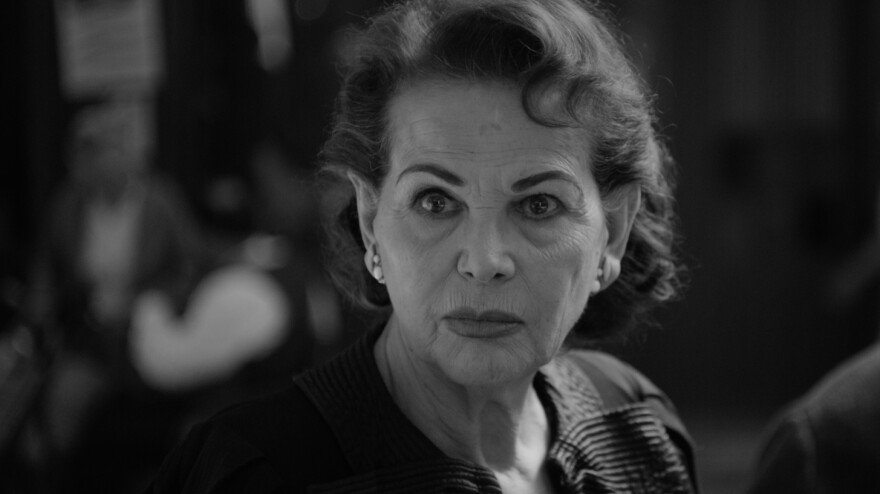Writer-director Fernando Trueba certainly isn't earning points for his original premise in The Artist and the Model, which tells the story of an elderly French artist at the end of World War II who suffers from a creative block until the arrival of a young muse fuels a late-career resurgence.
Still, for the first half-hour or so, Trueba's film shows signs that it might be trying to do something new with old material, eschewing sentimentality and melodrama for a thoughtful take on art, politics and old age. The rest of the film, alas, involves the drawn-out process of dashing those hopes.
The artist in question is painter Pierre-August Renoir — no, wait, that was earlier this year. Here he's sculptor Marc Cros (Jean Rochefort), a fictional figure that Trueba places in his historical moment by having him name-drop some of his famous friends, among them Matisse and Cezanne. The model is Merce (Aida Folch), who's discovered sleeping on the streets by Marc's wife and former muse, Lea (Claudia Cardinale).
Looming in the background is the war, which at least initially makes its presence felt only through brief news reports and sudden power outages. Meanwhile Merce, who seems at first to be no more than a young vagrant, slowly shows signs of a deeper mystery to her character. These two elements, together with moody black-and-white photography, give the beginning of The Artist and the Model an enigmatic quality, leaving us to wonder about what fateful disruption awaits its characters.

Nothing much, as it turns out. The war does intrude in the form of a parachutist, and Merce does turn out to be more than an exile from Spain, but the script makes little of either plot point. Ultimately what seemed like a delicate buildup amounts chiefly to a slow-moving movie unwilling to dig deeply into its themes and conflicts.
Trueba decides, for better or worse, to focus primarily on Marc and Merce. But even this central relationship remains frustratingly undeveloped, its complicated power dynamics vaguely delineated but never fully explored. As a result, what might have been a tangle of slow revelations about the two's feelings for each other come off as unexpected leaps in intimacy.
The script's often limited use of dialogue, meanwhile, creates a poetic, thoughtful atmosphere but leaves the film dependent on its actors, who can't quite create depth out of the story's minimal offerings. Rochefort's performance shows us only an outline sketch of the sculptor's frustrations; his Marc is ultimately a character who's isolated and reticent, at once obsessed with his work and thrown into fits of anger by it — all in all a fairly typical picture of artistic genius and its torments.
A work of art, as Marc explains, succeeds on the basis of the idea it expresses.
Without a strong thread to tie its proceedings together, The Artist and the Model slowly comes undone. The pacing moves from slow and deliberate to ragtag and rushed; the most interesting facet of its plot — a brief exploration of whether creating art demands political commitment — is left half-baked. And the film's funnier moments, courtesy of a group of Merce-obsessed children (one of whom declares his desire to become an artist so he can "watch naked women all day"), are so randomly placed in the story that they only emphasize the project's lack of a coherent vision.
The most telling disappointment in The Artist and the Model, though, comes about halfway through the film, when the story breaks from its proceedings to offer a kind of brief art-history lesson — an examination of a Rembrandt sketch showing a young child taking his first steps. Two other recent films — Barbaraand Museum Hours — have pulled similar contrivances, but their forays into conversation about aesthetics deepened the audience's understanding of the movie at hand. Marc's lecture only highlights a particular deficiency in The Artist and the Model.
To wit: A work of art, as Marc explains, succeeds on the basis of the idea it expresses. Rembrandt's sketch may have been hastily produced, he says, but "time doesn't matter here. It's the idea. He had the idea." The Artist and the Modelsuffers from the opposite affliction: It has all the trappings of a serious work of art, and it hasn't been hurried but it remains, in the end, disappointingly hollow.
Copyright 2021 NPR. To see more, visit https://www.npr.org. 9(MDAxODc1ODA5MDEyMjg1MDYxNTFiZTgwZg004))


